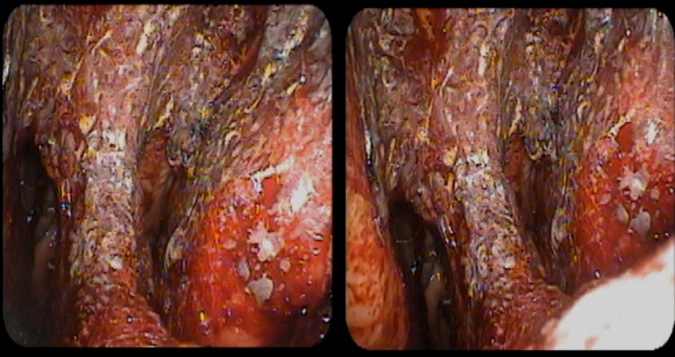
Septal Perforations are late complications of chronic nose bleeds in patients with Hereditary Hemorrhagic Telangiectasia (HHT), also known as Osler-Weber-Rendu Disease. Hereditary Hemorrhagic Telangiectasia (HHT) is a genetic disease characterized by aberrant overgrowth and proliferation (dysplasia) of vascular tissue known as telangiectasias and arteriovenous malformations (AVMs) within mucosal membranes of the body.
HHT presents with many different clinical manifestations depending on where the lesion is located within the body. The severity of symptoms are tied to the size of the lesion and there location. For patient with HHT involving the nasal mucosa the most common presenting symptom is repeated and persistent nose bleeds. Repeated cauterization for the treatment of recurrent nosebleeds overtime leads to hole or septal perforation of the nasal septum. Septal perforations in patients with HHT will typically increase the frequency of nose bleeds complicating the clinical picture further.
Septal perforation surgery specialist, Dr. Jason Hamilton, MD, discusses Hereditary Hemorrhagic Telangiectasia, septal perforations and the proper management of chronic nosebleeds.
